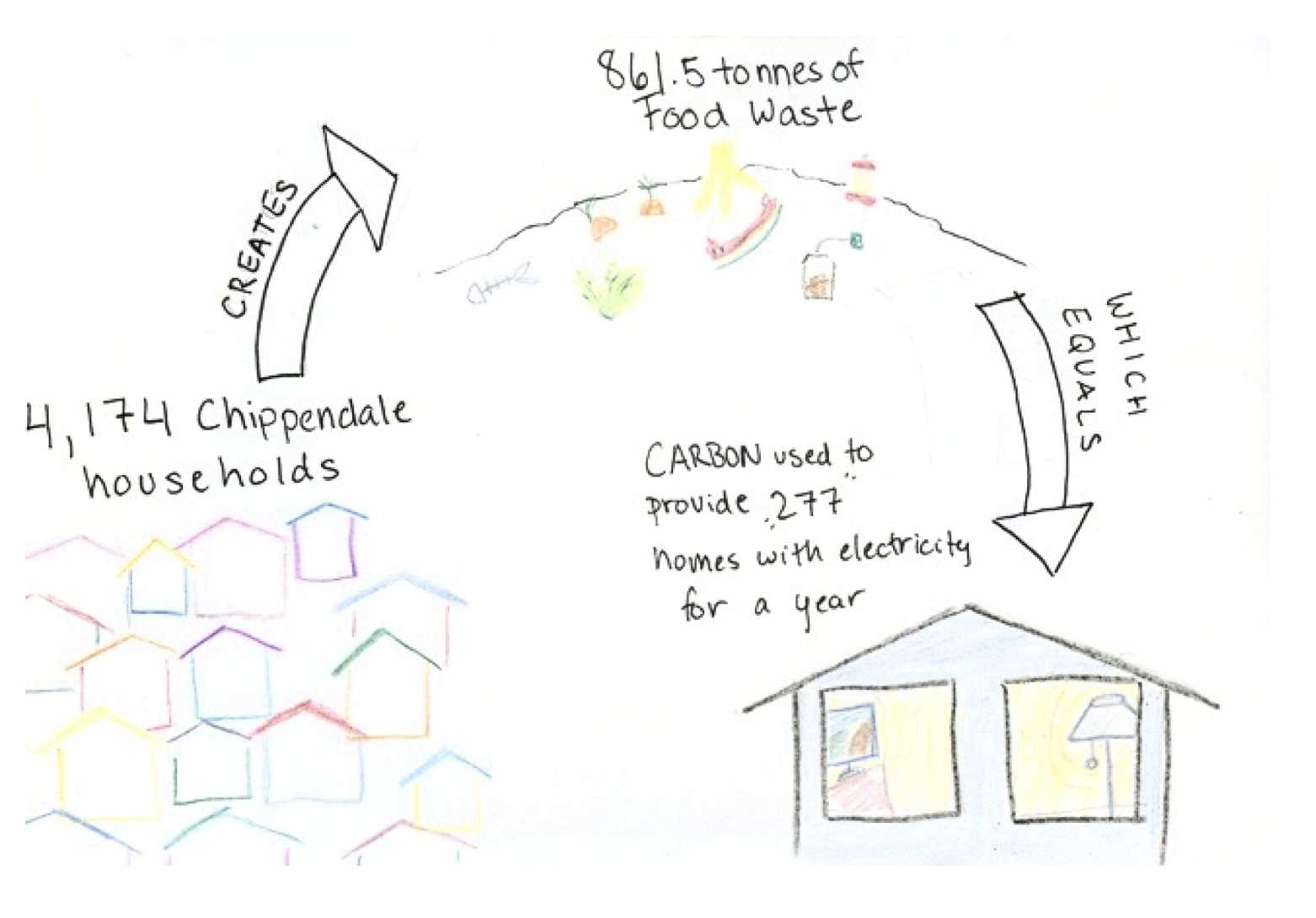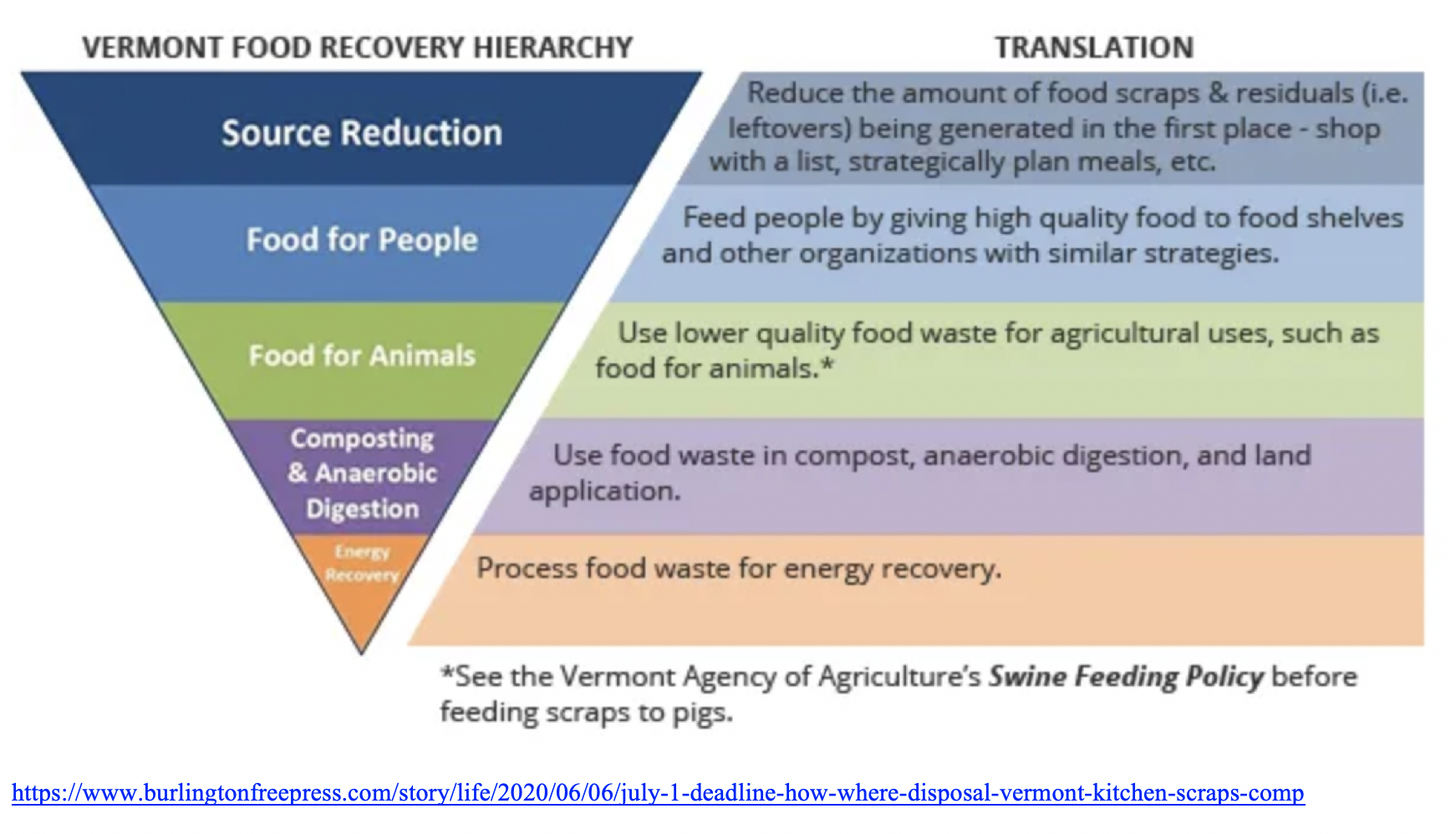US intern working with Sustainable House, Ailis O’Sullivan, does the numbers - what would it take to end food waste from the little Sydney suburb of Chippendale in Australia?
• My Massachusetts home
My name is Ailis O’Sullivan and I am a remote intern with Michael this summer!
While I am sad I am unable to be in Australia, I am working out of my home in Western Massachusetts, a beautiful little corner of the world with lots of mountains and woods to explore. I study Urban Economic Geography at Clark University and I have specific interest in the formation of cities and sustainable design.
• It gets cold here!
While I would love to make it to Chippendale some day, in the mean time I will be trying to figure out how to spread more sustainable living practices here, and maybe some day Massachusetts will see its first edible road garden!
Tackling climate change can certainly seem overwhelming, and quite frankly, it is for me.
While serious steps to halt and reverse climate change will come on a global scale, there are many things we can do in our homes to improve our environment and cool our Earth.
So what do we do to stop putting more pollution into earths air if carbon and methane are the product of turning on lights, driving cars and eating food— all things the average person does on a daily basis?
Typically, when we think about reversing our carbon pollution, we think about opting to bike to work instead of driving or making sure we turn off the lamp when we leave the room. Yes, electricity and transportation emissions are in a household’s carbon emissions - and also in food and the process it takes to get it to one’s plate - getting food requires large amounts of energy.
• Where do gases come from to heat up Earth?
Shown in this image from University of California, as expected, greenhouse gas emissions come from many different facets of our life.
Three of these bubbles are about food.
While a city dweller is not knocking down a forest to run their livestock, what we chose to eat supports companies who are doing that. Getting food on the plate includes fuel used by tractors and processing machinery. The meat and dairy industry are known to be the major emission creators but the statistic also includes vegetables, legumes, and other food products that require processing before distributing.
Buying food that is out of season also contributes to this transportation bubble. Of course, walking or taking public transit will help shrink this bubble, but so will reducing the miles of the products we buy.
What strikes my interest, is that a large percentage of these emissions is food waste.
This means food that we have cleared land for, watered, processed and transported-- sometimes between continents, has merely been spoiled, spilled, or simply thrown away.
A project done in Australia’s Randwick and Waverley Councils (located in Sydney, NSW) in 2009 assessed waste created by Australian households and is a report, the Hyder Report (Michael has a copy if you’ld like one - just email him).
Applying this to the small inner Sydney suburb of Chippendale, about 30 small blocks and just half an hour’s walk to the Sydney Opera House, it can be estimated that the 4,174 local households create an estimated 2,154 tonnes of MSW, or, municipal solid waste.
The Hyder report estimated that around 40%, or 861.51 tonnes of this MSW is food waste. This pollution from that amount of food waste translates to 1,636,869 CO2-e (kg) coming from Chippendale for food waste alone-- the equivalent amount of carbon used to provide 277 homes with electricity for the year.
• Air pollution - Chippendale’s food waste is causing Earth to heat up
Food waste entering Council landfill create anaerobic conditions for decomposing organic matter. The piles of food rot.
This means that when someone dumps their food waste, garden clippings, or paper into the landfill, the material is deprived of oxygen. As a result, the microbial communities that break down the matter contain methane-producing bacteria. Methane and carbon dioxide are then released into the atmosphere from the organic matter for years after its disposal.
Methane created from the anaerobic process is known to be 25 times more potent than carbon dioxide over a 100 year period, as noted in the Hyder report. The more methane released, the warmer our planet is becoming.
• How Chippendale’s food waste heats up Earth
Composting is a much more environmentally friendly approach to disposing of scraps. And it stops heating up Earth.
Not only are we taking up less space in landfill, but the chemical process that occurs in composting has less impact on Earth’s atmosphere.
Composting encourages aerobic degradation - decay with air or oxygen present, and is a process where only CO2 is released because of the abundance of oxygen available to the bacteria. This contrasts with the much more toxic methane that is emitted from the landfills where food is buried deep under other waste.
• Landfill v Compost
There have been a number of cities on Earth that have encouraged or enforced their citizens to redirect food waste to a personal or city composting system.
In the United States in the state of Vermont as of 1 July 2020, all food scraps have been banned from the trash.
The State estimates that will be 77,000 tonnes of food scraps channeled into home composts or the city composting system.
• Vermont does the numbers
While we are looking at the benefits of composting, it’s important to include this visual that Vermont is basing their food scrap diversion initiative on.
Yes, we should compost, but we should also try to reduce our first scraps in the first place. This would help in reducing the transportation and agriculture bubble we saw in the visual at the beginning.
Locally in Australia, a one year study was done in Waverley and Randwick Councils that looked to expand the home composting program across Waverley, Randwick, and Woollahra City Councils. There, 600 residents took part in the Food Waste Reduction Project, where they were all provided with a compost bin along with training and informational written material. From the study of just 600 people, a 43% reduction in food waste was seen, and they managed to avoid 27 CO2-e tonnes from the landfill. Attached is a graph of their findings, also represented is the emissions from home compost.
The study gives some ideas of similar statistics to what we would expect to see in Chippendale.
• Air pollution savings from Chippendale composting
Let’s look at Chippendale.
If the average Australian household produces 517 kilograms of MSW a year, that’s an average of 9.9 kg of waste a week. Sydney City Council offers household bins 50-80L, for a $323 annual fee. This should be more than enough to hold the average household’s waste (2.2 people).
So, if a house diverted all food scraps that they originally put in their trash into a home composting system, they would reduce their MSW by 40%, and go from a theoretical 9.94kg of waste per week to 5.97 kg of waste weekly, making it possible to put a trash can out for collection just once or twice a month.
Fewer houses for the truck to stop at every week may also improve the efficiency of the garbage truck as its stop and go nature (and of course, its weight) makes it so that the average garbage truck is assessed to get just 2.5 miles per gallon. In the Hyder report, the average household contributed 0.26 tonnes CO2-e /year just from their trash pick up.
Saving the city from 206.8 kg of waste (392.92 CO2-e kg in emissions) a year surely should reap some kind of benefit?
Sydney City Council has stated their interest in ending climate pollution, bringing its zero emissions target to 2040.
But the science says Earth, Sydney, Chippendale, the US - perhaps most human and other life - doesn’t have ‘til 2040 to get pollution to zero. Our lives depend on getting to zero before 2030.
Incentivising we citizens to compost our food scraps is an easy way to fast track and to both minimise and end 6% of our global emissions that is food waste.
So, those who participate in alternative food scrap disposal should roughly get a 40% cut on their trash can bill - $193.80 seems more accurate.
If households that committed to participating truly cut out all food scraps, this may be what the trash fees could look like, and more importantly, this is how much we could keep out of our landfills.
• Calculations for different pollution targets
Adding in the carbon emissions from composting, Chippendale’s emissions would look something like this:
• Chippendale air pollution - different participation rates
This chart includes emissions from foods in landfills as well as from backyard composts. If all Chippendale households committed to diverting their waste, there would be a 95% decrease in food waste derived emissions. This would be a huge victory for Chippendale, as they would join many other towns and territories across the world committed to cutting their food waste.
While pressure should continue to be on food suppliers and restaurants to reduce their waste, households we live in can easily play a vital role in ensuring that food stays out of our landfills - and save ourselves money if we pay less for waste.
Composting waste is an easy and efficient way to reduce methane in the atmosphere, and an essentially free way to nourish future plants that will beautify or feed your home, your street and the life there - trees, plants.
If you are reading from Chippendale, here is a reminder that there are a number of composting bin options along the streets.
Below, on the left, is a low-profile PVC compost pile where you simply unscrew the lid and deposit your food waste, the nutrients will be delivered to the kerb side plants. On the right is a turn-over bin which is also used to create compost to nourish local plants.
• Some Chippendale compost options
Already over 34 households and offices use these composting options and each week over 300 kgs of food waste is being turned into about 30 kgs of soil to grow food in the streets for anyone to pick and use – rosemary, paw paw, chilli, lime, lemons, lemon grass, finger lime, mint and more
May the compost be with us and upon our road and household gardens.
Ailis O’Sullivan, Intern with Sydney’s Sustainable House
References
Department of Environmental Conservation. (n.d.). Food Scraps. Retrieved July 29, 2020, from https://dec.vermont.gov/waste-management/solid/materials-mgmt/organic-materials
Engqvist, Y. (2010). Evaluation of home composting project (pp. 3-36, Rep.). North Sydney, Australia: Hyder Consulting Pty.
Luetkehans, N. (2017, April 17). Where do greenhouse gas emissions come from? Retrieved July 29, 2020, from https://www.universityofcalifornia.edu/longform/where-do-greenhouse-gas-emissions-come
Regulator, A. E. (2015). National Greenhouse accounts factors; Australian National Greenhouse Accounts. Australian Energy Regulator and Department of Environment of Australia.













